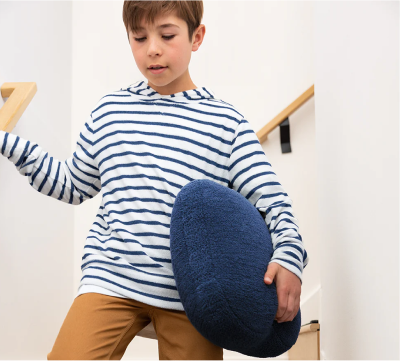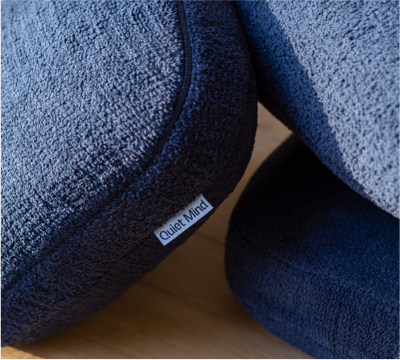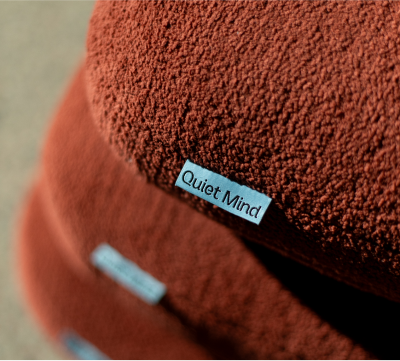A diagnosis doesn’t define your future. For someone with ADHD, the idea of a “normal life” can feel conditional, especially when the world feels built for different brains. But maybe that’s the wrong question.
Instead of chasing someone else’s version of normal, the real question becomes: Can I live well with clarity, balance, and purpose even with ADHD?
The answer is yes.
ADHD is often misunderstood, especially when symptoms don’t match the stereotypical image of a distracted child. In reality, ADHD is often a lifelong condition that can continue into adulthood. But with the right treatment and support, people can lead fulfilling, meaningful lives, on their own terms.
Whether you were diagnosed in childhood or only discovered it later, living with adult ADHD doesn’t mean settling for less. With awareness, tools, and a sustainable treatment plan, many people with ADHD not only cope, they thrive.
What “Normal Life” Means with ADHD
There’s no universal template for what a “normal” life looks like. But for those with ADHD, it often means building systems that support ease, finding environments that spark motivation, and creating rhythms that work with, not against, your brain.
Quality of Life Metrics in ADHD Research
When we talk about quality of life for people with ADHD, we’re not just referring to symptom reduction. We’re asking deeper questions about emotional wellbeing, connection, purpose, and the ability to meet the demands of adulthood with dignity and support.
Modern research, including studies supported by the National Institute of Mental Health, is beginning to reflect this broader perspective, shifting away from solely tracking symptoms of ADHD, and instead focusing on how ADHD affects a person’s entire ecosystem of daily activities.
What Quality of Life Research Looks At
In ADHD studies today, researchers examine:
- Emotional regulation and resilience.
- Social relationships and communication.
- Academic and professional achievement.
- Impact of sleep problems, burnout, and mental fatigue.
- Barriers to daily functioning and participation.
These findings help guide better diagnosis and treatment, and more importantly, they remind us that treatment for ADHD isn’t just about managing attention, it’s about helping people better manage ADHD.
How Tools and Support Influence Outcomes
People who receive treatment and support, whether through ADHD medications, therapy, coaching, or environmental accommodations, often show significant improvements in both functioning and satisfaction.
Interventions that acknowledge the whole person lead to better results, especially when paired with:
- A personalized treatment plan
- Tools that support executive function
- Environments designed to reduce symptoms that interfere with daily life
These approaches don’t eliminate ADHD, but they do increase capacity for joy, connection, and accomplishment.
Comparing Life Domains: Education, Career, Social
ADHD doesn’t follow a single path. It intersects with different life areas in unique ways, and while certain symptoms may create friction in one domain, they can be assets in another. Life can be hard for someone navigating ADHD without support, but with the right conditions, both children and adults with ADHD can thrive.
Education: Supporting Learning Styles
When a child has ADHD, school may feel overwhelming, not because they lack intelligence, but because inattentive symptoms, impulsive moments, or trouble sitting still can make it hard to engage in conventional settings.
Accommodations like these help students manage their ADHD symptoms and access learning with more ease:
- Extended test time or reduced-distraction environments
- Flexible assignment structures
- Support from specialized educators or an ADHD coach
Recognizing learning disabilities or attention deficit disorder early helps educators tailor support in ways that empower, not shame, young learners.
Career: Thriving in the Right Environment
Adult ADHD often shows up in the workplace through procrastination, missed deadlines, or difficulty organizing complex projects. But with the right tools, many adults not only manage, they excel.
Supports may include:
- Structured workflows and checklists.
- Task reminders and visual timers.
- Managers who offer flexibility around scheduling or communication style.
When diagnosed with ADHD, many professionals find success by aligning their work with their natural strengths, like creativity, adaptability, or rapid problem-solving. With adjustments and support, ADHD treatment can happen in ways that promote stability, growth, and fulfillment.
Social: Connection with Care
ADHD can affect social dynamics at any age. Symptoms like interrupting, emotional intensity, or forgetting plans may cause problems in relationships, but these are manageable with awareness and communication.
Low-pressure social spaces, peer support groups, or therapy sessions can help individuals build meaningful connections. When symptoms and causes are better understood, compassion becomes easier, both toward others and ourselves.
Real-World Success: Adults Thriving with ADHD
A meaningful, successful life with ADHD doesn’t require perfection. It requires self-awareness, adaptive strategies, and a willingness to do things differently. Many people with ADHD learn to channel their energy into innovative, impactful work, especially when they find environments that support them.
Inspirational Stories from Entrepreneurs and Creatives
ADHD can be deeply frustrating, but it can also be deeply powerful. When people begin to understand their brains instead of fighting them, something shifts. These stories don’t ignore the struggle; they highlight how ADHD traits, once misjudged, can become strengths in the right context.
Richard Branson, founder of Virgin Group, was expelled from multiple schools and struggled with reading and focus. Teachers saw failure, but he saw possibilities. His risk tolerance, quick decision-making, and energy for big ideas helped him build one of the most recognizable global brands. He credits ADHD as a major part of his success, not in spite of it, but through it.
David Neeleman, founder of JetBlue, couldn’t stay organized and often forgot appointments. He still struggles with those things today. But instead of trying to “fix” himself, he built systems that supported his brain. His ADHD gave him the vision to create an airline that prioritized innovation and customer experience.
Solange Knowles, a Grammy-winning musician and creative force, has spoken about living with ADHD as an adult. For years, she was misdiagnosed and misunderstood. Eventually, gaining clarity about her brain gave her not only relief, but control over her creative process. She’s since used her platform to advocate for mental health awareness, especially among Black women, where diagnosis often comes late.
Simone Biles, the most decorated gymnast in history, openly shared her ADHD diagnosis when critics tried to use it against her. She explained that medication was not about “enhancement,” but about managing something real and lifelong. Her honesty gave visibility to millions of young people, showing that strength isn’t about perfection, it’s about ownership.
Lisa Ling, journalist and host, has talked about how ADHD impacts her ability to stay on task. But instead of hiding it, she uses her natural curiosity and fast-paced thinking to dive deeply into diverse stories with empathy and intensity. Her brain doesn’t work in a straight line, and that’s exactly why her work resonates.
Each of these stories carries the same truth: ADHD is not a shortcut to success, nor is it a sentence to struggle. It’s a different operating system. These individuals succeeded not because they "beat" ADHD, but because they stopped apologizing for it. They built supports around it, and leaned into what it allowed them to do differently.
The lesson for anyone reading? You don’t have to become someone else to thrive. You just need the tools, the insight, and the permission to build your life around how your mind actually works.
Common Traits Behind Success Stories
Across both public figures and everyday people, common ADHD strengths often include:
- Passion-driven focus.
- Rapid problem-solving.
- Resilience after failure.
- An ability to pivot when things change.
Of course, symptoms can cause friction too; but when these same traits are met with the right support and treatment, the result can be powerful.
Workplace Strategies That Unlock Potential
Many adults with ADHD report that the following strategies dramatically improve focus and reduce overwhelm. They’re not one-size-fits-all, but each can be adapted to fit how your brain works best.
Break Tasks Into Smaller Steps
One of the most common blocks for adults with ADHD is starting something that feels too big or too vague. The brain sees a massive task, like “write a report” or “clean the apartment”, and shuts down. It’s not laziness. It’s overwhelming.
Task segmentation helps by breaking large goals into smaller, clearly defined actions. For example, instead of writing "plan vacation," you’d list:
- Research flight prices
- Choose travel dates
- Compare hotel options
- Make a packing list
This approach gives your brain something concrete to work with. Each step feels doable, and completing one builds momentum for the next. Breaking tasks into parts isn’t about lowering expectations, it’s about creating a clearer path forward.
Use Regular, Timed Breaks
Many adults with ADHD either work in short, frantic bursts or hyperfocus for hours without noticing time passing. Both can lead to burnout. That’s where scheduled breaks come in, not as interruptions, but as fuel.
The Pomodoro Technique is a favorite because it builds in breaks before your brain starts to fade. You work for 25 minutes, then take a 5-minute break. After four rounds, you take a longer 15–30-minute break. During the work time, you commit fully; during the break, you give your mind permission to rest.
This rhythm not only helps with focus, it trains your brain to expect relief, which makes starting work less intimidating. Over time, it helps regulate energy and makes long tasks feel more sustainable.
Keep Visual Cues in Sight
Out of sight, out of mind, especially with ADHD. Whether it's forgetting to respond to a message, missing an appointment, or starting a task and getting derailed, memory gaps and time blindness are common. That’s why visual reminders aren’t just helpful, they’re essential.
Sticky notes, color-coded calendars, wall whiteboards, labeled bins, checklists on your mirror, these tools help externalize what's often hard to hold in your head. They serve as anchors when your internal clock or memory isn’t reliable.
But visual tools only work when they’re visible. This means keeping reminders in the spaces where you actually live and work, not buried in an app you rarely check. The goal isn’t clutter, it’s clarity. A simple sticky note in the right place can do more than the most elaborate productivity app.
Strengths That Often Accompany ADHD
While ADHD is often viewed through the lens of struggle, it also comes with innate strengths, many of which are under-recognized in traditional settings. Reframing ADHD through a strength-based lens helps people move from self-blame to self-trust.
Hyperfocus, Creativity, and Resilience as Advantages
- Hyperfocus enables sustained attention when something truly engages the brain. Though inconsistent, it can lead to deep skill-building and creative breakthroughs.
- Creativity often comes from the ADHD brain’s ability to think in loops rather than straight lines, seeing patterns or solutions others miss.
- Resilience grows from navigating systems not built for neurodivergence. Adults may develop strong coping skills and the ability to bounce back quickly.
These traits can support success across a range of daily tasks, especially when guided by a solid treatment plan and environment that aligns with the person’s rhythm.
How Neurodiversity Fosters Innovation
Attention deficit hyperactivity disorder is one form of neurodiversity, a term that acknowledges the natural variation in how brains process information. When workplaces and schools embrace this diversity, they create room for new ways of thinking.
Innovation is not a side effect of ADHD, it’s often a direct result. Companies that prioritize inclusivity and offer treatment and support, such as flexible workflows or sensory accommodations, create space for neurodivergent individuals to thrive, not just survive.
What are the Challenges of ADHD?
Living with ADHD brings a unique set of patterns, some empowering, others more difficult to navigate. While strengths like creativity and hyperfocus are often celebrated, symptoms that interfere with daily life are very real and deserve care, not shame.
Common Challenges for Children and Adults with ADHD
For many people with ADHD, everyday tasks can feel heavier than they appear. Here are some of the most common difficulties:
- Difficulty paying attention in conversations, classes, or work meetings.
- Trouble sitting still or feeling restless throughout the day.
- Inattentive symptoms that lead to forgetfulness or missed details.
- Impulsive decisions or blurting things out without thinking.
- Emotional reactivity, including frustration or overwhelm over small triggers.
- Procrastination, especially on tasks that require planning.
- Sleep problems that disrupt routines and worsen focus.
- Symptoms may change throughout the day, making consistency harder.
- Struggles with executive function, including time blindness and task initiation.
- Increased risk of comorbid mental disorders, such as anxiety or depression.
These symptoms can cause difficulties in managing daily activities, meeting deadlines, or maintaining healthy routines. Left unsupported, they may also affect your daily life in relationships, education, or work.
How to Manage ADHD More Effectively
The good news is that these challenges are manageable, especially with a combination of treatment and support, intentional tools, and compassionate self-awareness.
Here are strategies that may help:
- Use visual aids like wall calendars, sticky notes, or digital reminders to create external structure.
- Break down tasks into friction-free, actionable steps so you can start small and build momentum.
- Establish routines to reduce decision fatigue, especially for mornings or transitions.
- Explore mindfulness practices to support emotional regulation and presence.
- Consider working with an ADHD coach to create a personalized rhythm and external accountability.
- Address comorbid conditions early; treatment for ADHD is more effective when anxiety or mood symptoms are also being supported.
- Seek a comprehensive treatment plan that may include ADHD medications, therapy, or coaching.
- Build systems around your ability to focus, not your perceived shortcomings.
Managing ADHD isn’t about becoming someone else. It’s about finding tools that work for your brain, so you can meet the demands of adulthood while honoring your energy, clarity, and growth.
What Are The Treatments and Tools for Managing ADHD?
There’s no single “cure” for ADHD, but there are many ways to live well with it. The most effective approaches combine structure, flexibility, and ongoing support.
From ADHD medications to coaching and environmental adjustments, the goal is never to erase ADHD, but to support the person navigating it.
Medications & Therapy: Impact on Daily Functioning
For children and adults alike, ADHD is often treated using stimulant medications such as Ritalin or Adderall. These can help improve focus, reduce impulsivity, and support the brain’s ability to filter distractions.
For others, non-stimulant options, like Strattera, may be a better fit, especially when anxiety or sleep problems are also present.
In addition to medication and therapy, Cognitive Behavioral Therapy (CBT) is commonly used in treatment for ADHD, especially when emotional regulation or self-esteem are impacted. It helps reframe unhelpful thoughts and supports non-medicated, sustainable ADHD management strategies.
Therapy also provides space to process symptoms and causes, build awareness, and address the emotional weight that ADHD can carry, especially for those who were diagnosed in childhood and internalized negative messages early on.
Coaching, Accommodations, and Self-Management Tools
Practical tools and relational support create the foundation for long-term success:
- ADHD Coach: An ADHD coach works collaboratively with individuals to set realistic goals, build daily routines, and stay accountable. They focus on helping people follow through on intentions, manage time more effectively, and build habits that align with how their brain works.
- Workplace Accommodations: Accommodations like flexible deadlines, quiet environments, written instructions, or modified workflows can reduce distractions and make work more manageable. Many adults with ADHD qualify for these adjustments under the ADA, allowing them to perform at their best without being overwhelmed by the environment.
- Self-Management Tools: Tools such as digital planners, focus timers, reminders, and analog notebooks help externalize memory and reduce cognitive overload. When used regularly, they support task tracking, time awareness, and smoother transitions throughout the day.
For moments of restlessness or emotional intensity, Quiet Mind recommends using a weighted pillow to calm the nervous system and bring the body back into regulation. These tools make a difference not by forcing productivity, but by helping people stay focused, control impulses, and move through their day with more ease.
What Employers & Educators Are Learning to Do Better
As awareness grows, schools and workplaces are beginning to shift from outdated expectations toward environments that are more inclusive, and more effective, for people with ADHD. This shift is not just compassionate; it’s essential.
Workplace Accommodations and AI Tools
In professional settings, ADHD in adults can present in many ways, missed deadlines, forgetfulness, or difficulty juggling multiple tasks. But with even small adjustments, the workplace can become far more accessible.
Effective accommodations include:
- Flexible scheduling, which supports natural focus rhythms.
- Task management software and AI tools that break down projects step-by-step.
- Quiet workspaces or noise-reduction headphones for sensory regulation.
- Visual checklists and prioritization aids to manage daily tasks.
With the right tools and a supportive manager, adults may not only function well, but excel in roles that value creativity, adaptability, and fast-paced thinking.
Education Adjustments: Structured Environments and Support
When a child has ADHD, or a teen struggles with inattentive symptoms, a standard classroom may become overwhelming. Thankfully, educators are now better equipped to support children and adults through intentional design and flexibility.
Supportive strategies in education include:
- Extended time on exams and assignments.
- Predictable classroom routines.
- Access to learning specialists or structured mentorship.
- Visual cues and reduced-distraction testing environments.
Importantly, these supports are often required under the Americans with Disabilities Act (ADA). When paired with a strong treatment and support plan, including medication and therapy or accommodations, students are more likely to thrive both academically and emotionally.
|
Accommodation |
Workplace Use |
Educational Use |
|
Flexible Scheduling |
Aligns tasks with natural focus patterns |
Allows breaks for energy regulation |
|
AI Tools |
Simplifies task tracking and prioritization |
Supports assignment clarity |
|
Structured Environments |
Reduces sensory and cognitive overload |
Encourages engagement and consistency |
These changes don’t lower standards, they raise access, allowing more people to show up fully.
Final Thoughts
A meaningful life with ADHD isn’t just possible, it’s already being lived, every day, by many people with ADHD who are building lives of purpose, adaptability, and personal truth.
Yes, ADHD can affect how you think, feel, and respond. Yes, certain symptoms may make it harder to follow conventional paths. But that doesn’t mean you’re off-track.
With the right diagnosis and treatment, whether that includes ADHD medications, CBT, coaching, or environmental changes, you can learn to manage your symptoms. This support can also help reduce shame and build sustainable habits that reflect your values.
You don’t have to chase “normal.” You can define what it means to feel regulated, connected, and free, in your body, your mind, and your life.
Living well with ADHD starts by accepting where you are, and supporting yourself with what you need to grow.
About Quiet Mind
At Quiet Mind, we believe that living with ADHD doesn’t mean settling for less, it means learning how to live with clarity, rhythm, and the right support. Whether you were diagnosed with ADHD as a child or later in adulthood, your needs are valid, and your path is your own.
Our content supports children and adults, meeting you where you are with calm, flexible guidance. One of our most grounding tools is the Quiet Mind weighted pillow, a compact, calming aid that applies gentle pressure across the chest, lap, or shoulders. For people navigating symptoms of ADHD like restlessness, overwhelm, or emotional intensity, this small ritual can provide deep comfort.
Use it while planning your daily tasks, unwinding after a long day, or simply as part of a self-regulation practice. Designed to promote safety and stillness, our weighted pillow is more than a product, it’s a supportive cue to slow down, settle in, and reconnect with yourself.
Frequently Asked Questions
What is ADHD and how does it affect daily life?
ADHD is a neurodevelopmental condition that impacts attention, emotional regulation, and impulse control. It can interfere with work, routines, and relationships. With the right tools and support, symptoms can be managed effectively across all areas of life.
Can adults have ADHD, or is it only a childhood condition?
ADHD starts in childhood, but symptoms often persist into adulthood. Many adults go undiagnosed until later in life, often after years of difficulty with focus, organization, or follow-through that finally lead them to seek clarity.
How does ADHD affect career and education?
ADHD can make it harder to prioritize, stay organized, and complete tasks on time. This often leads to underperformance or burnout. Accommodations and task management strategies can significantly improve outcomes in both school and work.
What are some common strengths associated with ADHD?
People with ADHD often show creativity, quick thinking, and intense focus in areas they care about. These strengths can thrive in the right environment, especially when supported by structure and self-awareness.
How can I manage ADHD symptoms and improve my quality of life?
Treatment options include medication, therapy, and coaching. Tools like planners, timers, and structured routines can support daily function. What works best is often a personalized mix that evolves over time.
What accommodations are available for individuals with ADHD in the workplace and education?
Accommodations may include extended time, quiet spaces, flexible deadlines, or visual task support. These adjustments are designed to reduce distraction and executive function strain, and are often protected under laws like the ADA or Section 504.

















